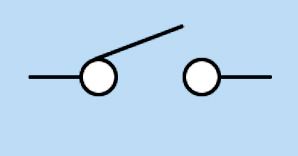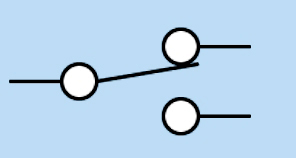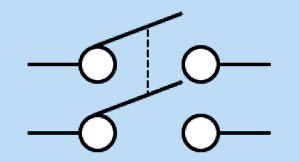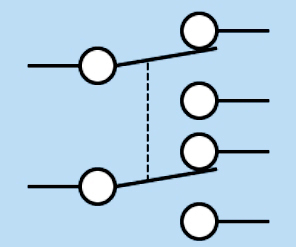Understanding Switch poles and Throws
2024/12/17 17:57:58
Views:
Switches are everywhere in people's lives, turning lights on and off is something we do every day. One of the things that control the connectivity of the circuit is related to poles and throws, let me introduce you to what poles and throws are!
How Many Poles and Throws do You Need?
What are switch poles and throws?
In electrical switches, poles and throws refer to the number of independent circuits and connections that the switch can control, and the following is a detailed description of these terms.
1. Poles: Indicates the number of independent circuits that can be controlled to be closed. Each poles is equivalent to one contact of the switch, which is used to make and break electrical connections. Simply put, it means how many different circuits the switch can control.
- Single Pole (SP): Only one contact that can open or close a circuit.
- Double Pole(DP): There are two contacts, controlling two circuits at the same time.
2.Throws:It refers to the number of different positions that the switch can switch and close, and indicates the different circuits that the switch can connect.
- Single Throw (ST): indicates that the switch has one position (open or closed).
- Double Throw (DT): indicates that the switch has two positions.
As stated above, a switch that can control only one circuit in a single operation, the operation in which you turn on the lights in your house, is a single-pole switch.
If this switch can control two or three circuits at the same time in a single operation, that is, if you hold down the switch and two or three lights come on in your house, it is a double-pole or three-pole switch.
Types of Electrical Switches
While poles and throws have been well described, the following switch types are particularly common in circuit design, so let me show you each one.
Single Pole Single Throw (SPST)

This is the most common and simplest type of switch. It consists of two terminals that are electrically connected to form a circuit, and it controls the opening and closing of a single circuit. This means that when you turn the switch on, the circuit flows and the device works, and when you turn the switch off, the circuit is broken and the device stops working. Circuits are often used, for example, to control devices such as flashlights and fans.
Single Pole Double Throw (SPDT)

It has one input and two outputs. It works by switching the position to connect the input to one of the outputs.
In the "ON-1" position, the input is connected to output 1 and circuit 1 is closed; in the "ON-2" position, the input is connected to output 2 and circuit 2 is closed.In addition to the "ON-1" and "ON-2" positions, the switch can also have an "OFF" position, indicating that the input is not connected to any output. Its function is to select different circuits and to control the on/off of the current.
Double Pole Single Throw (DPST)

It has four terminals that can control two circuits at the same time. They are 1, 2, 3, and 4. It can control the switching of two circuits at the same time, each of which is completely isolated from the other.
- "Open" position: terminal 1 and terminal 3 are connected, terminal 2 and terminal 4 are also connected, both circuits are closed at the same time, and current can flow.- "OFF" position: both terminals are not connected, the circuits are disconnected and no current can flow.
Each circuit is completely isolated from each other, which prevents circuits of different voltages from interfering with each other. Commonly used where two circuits need to be controlled at the same time and isolation is guaranteed.
Double Pole Double Throw (DPDT)

This switch has six terminals, two of which are inputs and four of which are outputs. Each input can be connected to two outputs, so it can control more circuits.
As an example, this switch has three positions (up, center, and down). When the switch is in the "up" position, input 2 is connected to output 3, and input 5 is connected to output 6 but not electrically connected.It should also be noted that some switches look complex on the outside, but in fact the function is relatively simple, there are some switch terminals may not need to use, check the manual for details.
And there are momentary switch switches that are momentarily triggered, work when you press and recover automatically when you release.
Conclusion
Understanding the basic types of poles and Throws combinations will help you a lot in designing simple and complex circuits in the future. There are others such as Triple Pole Double Throw (3PDT), Quadruple Pole Double Throw (4PDT), etc. Let's continue to learn more about them later!
Related Information
-
-
Phone
+86 135 3401 3447 -
Whatsapp





